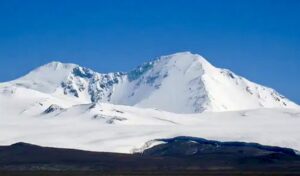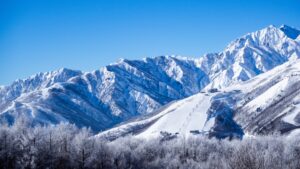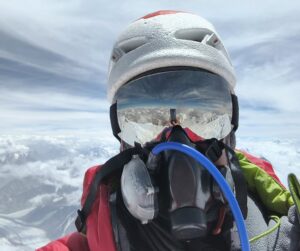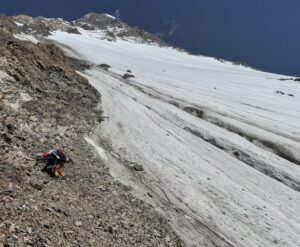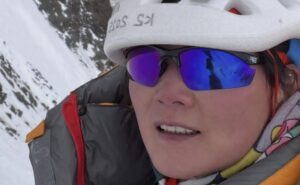Magdalena Gorzkowska, one of the survivors of winter K2, grapples with her experience in this exclusive interview with ExplorersWeb.
Magdalena Gorzkowska is back at home in Poland from K2, physically recovered but dealing with the aftermath in other ways. ExplorersWeb spoke to her about her experience and cleared up some of the controversial statements that she recently made to Polish media.
Specifically, Gorzkowska had said that a Sherpa told her that the Nepalis had orders to cut the ropes if someone else followed them. “It is true that the Sherpas said that, but I took it as a silly joke — we were joking all the time in Base Camp,” she said. “Likewise, I didn’t think anyone would take it literally when mentioned that in the interview.”
“To begin with, no one actually followed the Nepalis on their summit push. But most of all, I spoke to Mingma David after their summit and he confirmed that they not only left all the ropes but also put in some new ones for us. I trust that they were thinking of those of us who might attempt the summit later on. The Nepalis were all professionals.”

Magdalena Gorzkowska during one of many slow days in BC waiting out high winds. Photo: Oswaldo Rodrigo Pereira
As she processes her Pakistan experience, Gorzkowska admits that K2 has changed her attitude towards mountaineering.
“Before the expedition, I was so eager to get to K2. I was seriously aiming for the summit. This was not about experiencing winter, it was about trying to reach the top.
“I had been on three 8,000’ers previously and always succeeded, so I was very self-confident — I still believe I could have done it. At the same time, I prepared as well as I could, running and climbing, and exercising. I did cold-water bathing in order to improve my thermo-regulation, and also talked to many winter Himalayan climbers for details that might help. For instance, I made sure I brought backups of every piece of gear and I had my outer clothes (gloves, boots, down suit) prepared with electrical warmers. I was thoroughly prepared for the cold.
“And in fact, the low temperatures were not the biggest problem. What I was not prepared for was for the brutality of K2 in winter, where a small mistake can kill you at any moment, and the tragedy of losing five people. No one can prepare for something like that. And now I am dealing with the psychological scars.

Cold was not the problem for Gorzkowska. Photo: Oswaldo Rodrigo Pereira
“I will keep climbing…[but] now I am much more safety-conscious. Safety will come first and I will not only think about the summit. I will not rush. I had considered adding up 8,000m summits as fast as possible, linking several expeditions, but not anymore. I have pulled the brake and stopped.
“And yes, I will return to K2. But in summer. The mountain is magnificent and I have been told the conditions in summer are very different. As for winter, I’ve had enough.”

On the way to Advanced Base Camp. Photo: Oswaldo Rodrigo Pereira
About the events at Camp 3, says Gorzkowska, “there was a lot of misunderstanding about the tents. About 20 people left for Camp 3 and they all needed to rest, hydrate, change clothes. But with seven people in a tent, that was impossible.
“Also, those who went for the summit started too late. Previously, we had agreed that those wanting to leave for the summit from C3 should start at 6 or 8 pm because conditions were tough and the window was narrow. But people reached C3 very late, and so those heading for the summit left late as well — too late to return in safe weather conditions.
“On this and any other mountain, it is essential to check what’s going on, make time calculations for a safe return, and listen to yourself. I know this is difficult when you are so close to the summit, but you have to tell yourself the truth as I did in Camp 1: ‘Sorry Magda, you are too weak for K2, you must go back.’ And so I did.”

Health issues (and the pressure) turned the climb to Camp 1 into a nightmare for Magdalena Gorzkowska. She decided to end her summit bid there. Photo: Oswaldo Rodrigo Pereira
“As for the three climbers who went missing, as I see it, there were many signs not to go up: the timing, the worsening weather coming the following day, the dead batteries on Snorri’s radio (as explained by those who returned from C3) and that crevasse above Camp 3 that we do not know how or where they crossed. Not to mention all the accidents that might have happened.”


